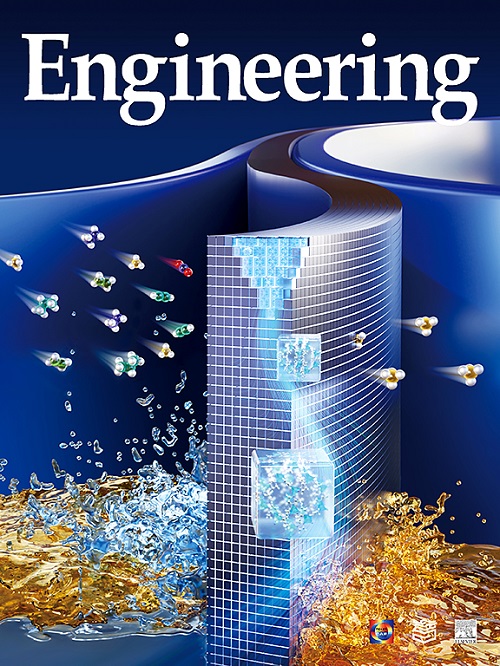智能光子学:一项颠覆性的技术来塑造现在和重新定义未来
IF 10.1
1区 工程技术
Q1 ENGINEERING, MULTIDISCIPLINARY
引用次数: 0
摘要
近年来,人工智能(AI)取得了惊人的飞跃,发展成为开拓未来的战略技术。对计算能力的需求日益增长,尤其是在要求苛刻的推理任务中,例如chatgpt等生成式人工智能模型,对传统的电子计算系统提出了挑战。光子技术的进步激发了人们对研究光子计算作为一种有前途的人工智能计算方式的兴趣。通过人工智能与光子学技术的深度融合,智能光子学正在发展成为一个新兴的跨学科领域,具有革命性的实际应用潜力。深度学习作为人工智能的一个子集,为优化光子设计、开发智能光学系统以及进行光学数据处理和分析提供了有效的途径。在光子学中使用人工智能可以为智能手机相机、生物医学显微镜以及虚拟和增强现实显示器等应用提供支持。相反,利用基于光子学的设备和系统来实现神经网络的物理实现可以实现高速和低能耗。将光子学技术应用于人工智能计算,有望对光通信、自动驾驶、天文观测等多个领域产生变革性影响。本文从深度学习与元光子学、全息学和量子光子学的协同作用的角度介绍了智能光子学的最新进展。本文还重点介绍了相关应用,并提出了挑战和前景。本文章由计算机程序翻译,如有差异,请以英文原文为准。

Intelligent Photonics: A Disruptive Technology to Shape the Present and Redefine the Future
Artificial intelligence (AI) has taken breathtaking leaps forward in recent years, evolving into a strategic technology for pioneering the future. The growing demand for computing power—especially in demanding inference tasks, exemplified by generative AI models such as ChatGPT—poses challenges for conventional electronic computing systems. Advances in photonics technology have ignited interest in investigating photonic computing as a promising AI computing modality. Through the profound fusion of AI and photonics technologies, intelligent photonics is developing as an emerging interdisciplinary field with significant potential to revolutionize practical applications. Deep learning, as a subset of AI, presents efficient avenues for optimizing photonic design, developing intelligent optical systems, and performing optical data processing and analysis. Employing AI in photonics can empower applications such as smartphone cameras, biomedical microscopy, and virtual and augmented reality displays. Conversely, leveraging photonics-based devices and systems for the physical implementation of neural networks enables high speed and low energy consumption. Applying photonics technology in AI computing is expected to have a transformative impact on diverse fields, including optical communications, automatic driving, and astronomical observation. Here, recent advances in intelligent photonics are presented from the perspective of the synergy between deep learning and metaphotonics, holography, and quantum photonics. This review also spotlights relevant applications and offers insights into challenges and prospects.
求助全文
通过发布文献求助,成功后即可免费获取论文全文。
去求助
来源期刊

Engineering
Environmental Science-Environmental Engineering
自引率
1.60%
发文量
335
审稿时长
35 days
期刊介绍:
Engineering, an international open-access journal initiated by the Chinese Academy of Engineering (CAE) in 2015, serves as a distinguished platform for disseminating cutting-edge advancements in engineering R&D, sharing major research outputs, and highlighting key achievements worldwide. The journal's objectives encompass reporting progress in engineering science, fostering discussions on hot topics, addressing areas of interest, challenges, and prospects in engineering development, while considering human and environmental well-being and ethics in engineering. It aims to inspire breakthroughs and innovations with profound economic and social significance, propelling them to advanced international standards and transforming them into a new productive force. Ultimately, this endeavor seeks to bring about positive changes globally, benefit humanity, and shape a new future.
 求助内容:
求助内容: 应助结果提醒方式:
应助结果提醒方式:


